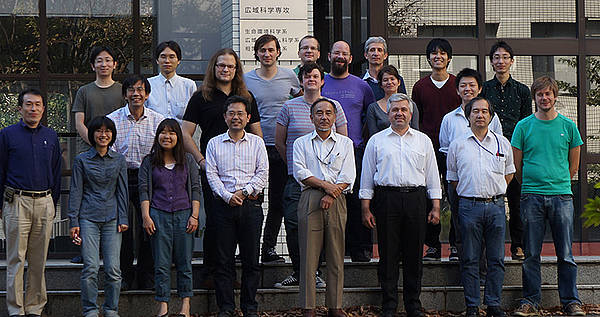21-01-2014
01-2014
[Press] First observation of a beam of Antihydrogen
An international group of physicists with contribution of the Stefan Meyer Institute for subatomic physics (SMI) of the Austrian Academy of Sciences, achieved the formation an Antihydrogen beam for the first time. This success, published by the online-journal “Nature Communications”, marks an important step for our understanding of Antimatter. It allows for precise investigation for Antihydrogen and therefore gives rise to the next step for answering the question about our very reason of existence, the mysterious lack of Antimatter in the universe.
Fundamental symmetry
One of the most fundamental symmetries in the standard model of particle physics is the so called CPT symmetry between matter and antimatter.
Every experiment, ever done, showed the validity of this microscopy symmetry, but at the same time we can observe a striking asymmetry in the universe: In the very moment of the Big Bang an equal amount of matter and antimatter would have been produced – until now we could not find any hint for the presence of antimatter in the universe.
Next milestone in sight
“Even a very tiny violation of the CPT symmetry could account for the dominance of matter over antimatter in an elegant way“, explains Eberhard Widmann, director of SMI. “That’s why it is important to test the properties of matter and antimatter in the laboratory“, says the leader of the Austrian group working on the project. The newly produced beam allows for a precise measurement of Antihydrogen, the lightest atom consisting only of antimatter. Based on this recent results, that were achieved within the ASACUSA collaboration at the Antiproton Decelerator at CERN, it is expected to determine the inner structure of Antihydrogen for the first time in the near future. The next measurements are scheduled to start in the second half-year. In any case, the foundations are built.

Schematic view of the apparatus. From left to right: the so called “Cusp”-trap, where the production of Antihydrogen atoms takes place, a microwave cavity (green) to drive hyperfine transitions, a sextupole magnet (red and grey) and the Antihydrogen detector (gold). Areas in blue colour symbolize the beam of Antihydrogen.

CUSP trap
Final Setup

CUSP group
Sources: Stefan Meyer Institute
